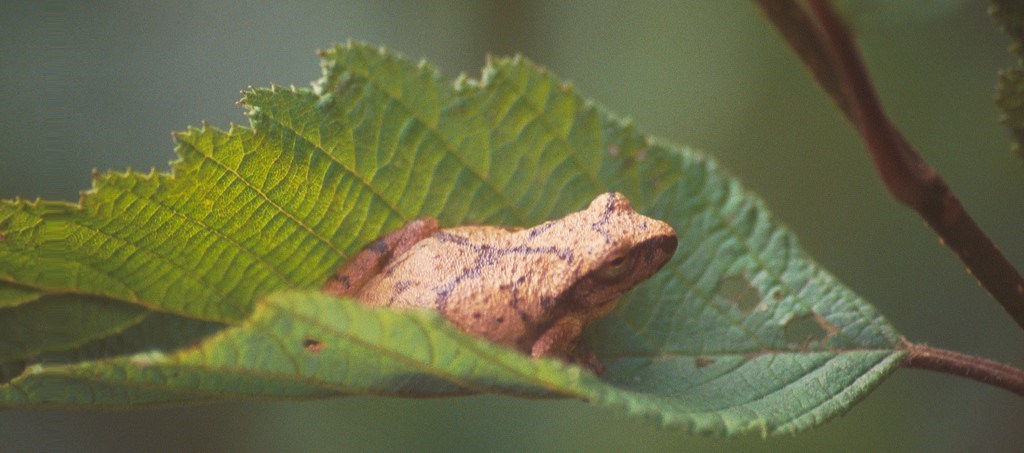
NPS / G. Kirk A Wet EnvironmentDespite all the lakes and wetlands of northern Minnesota, the southern boreal winter is a surprisingly hostile place for amphibians and reptiles. Whether they hibernate in wetland bottoms or soil below the frost line, conditions are often challenging. As a result few species call this home. While there are a dozen amphibians, like omakakii (frogs) and okaadiginebig (salamanders), there are only three reptiles – the wenda ginebig (garter snake), mikinaak (snapping turtle), and miskwaadesi (painted turtle). More often than not you will find omakakii (wood frogs) and gisiibwewed (spring peepers). The chorus created by these species is well worth the trip. One place to listen is the Meadow boardwalk on the Grand Portage trail (halfway between old highway 61 and Fort Charlotte) in the spring. Wetlands (mashkiig) interpretive coloring page 
NPS Photo The Importance of MonitoringWhy are declines of amphibian populations one of the most prominent conservation issues in the world? Why are they symbols of climate change? Most amphibians need both land and water during their lifetimes and are sensitive to environmental changes including temperature, precipitation, and humidity, making them excellent indicators of habitat change. Because of their unique calls, toads and frogs are easy to identify. This makes it possible to monitor their populations using remote recorders, or “frog loggers.” Learn how scientists gather information about these species. 
USFWS photo/Ken Sturm Amphibians and reptiles are vertebrates that live on land or in water at different times in their life cycle. Amphibians breed in water, while reptiles breed on land. To see which species live at Grand Portage National Monument, explore the lists below: Select a Park:Select a Species Category (optional):
Search results will be displayed here.
|
Last updated: February 24, 2025
